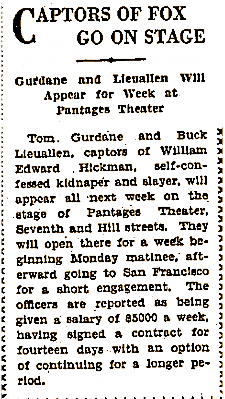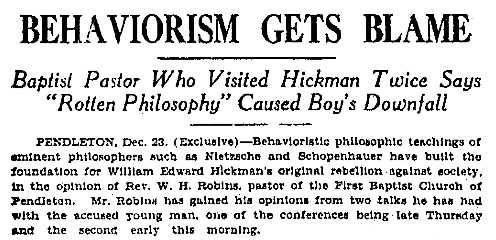January 2, 1927
Los Angeles

The good people of Los Angeles were reminded today of a quieter, simpler time—a time known as "1921". A magical time of Teapot Domes, and Tulsa Tumults, and shotgun blasts to the face. We collectively remembered the sensational trial of Arthur C. Burch and Madalynne Obenchain, dismissed following jury disagreements, regarding the August 6, 1921 Beverly Glen shooting and .12 gauge buckshot that took apart J. Belton Kennedy’s head. (And now, our obligatory Kennedy "Gaelic For Ugly Head" Kennedy evidence: the shots were fired from a clump of bushes [California: growing better grassy knolls since 1850]; the first shot missed; there was a beautiful woman at the scene, and mysterious tramps…anyway.)
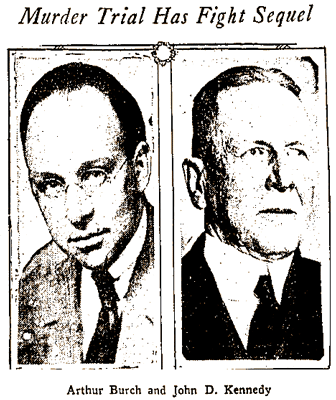 Seems that J. Belton’s father, John D. Kennedy, of 844 South Westlake, never got over the death of his son, or the exoneration of the accused. So today the sixty two year-old is in court on the charge of assault and battery. He headed over to the Terminal Warehouse Building on East 7th where Burch worked in the insurance game. As Burch was innocently hauling some fire extinguishers from one place to another, he suddenly heard “I’ve been waiting a long time but now I’ve got you!” – and was then struck in the face and seized by the throat, but was rescued before he felt the last bit of life choked from him.
Seems that J. Belton’s father, John D. Kennedy, of 844 South Westlake, never got over the death of his son, or the exoneration of the accused. So today the sixty two year-old is in court on the charge of assault and battery. He headed over to the Terminal Warehouse Building on East 7th where Burch worked in the insurance game. As Burch was innocently hauling some fire extinguishers from one place to another, he suddenly heard “I’ve been waiting a long time but now I’ve got you!” – and was then struck in the face and seized by the throat, but was rescued before he felt the last bit of life choked from him.
Authorities were summoned, and said Kennedy the Elder, later, “The affair occurred when my emotions overcame me. I have no regrets and will gladly account for my actions at the proper time and place. When I went in the building no such idea entered my mind, but when I saw him [Burch] coming down the hall I could not restrain myself.
“This is the fist time I have met him fact to face since his trials for the murder of my boy. At the sight of him I was seized with a frenzy and choked him until he began squealing and they came and separated us.”
“I believe he has some pathetic obsession toward me,” Burch declared.
Mrs. Obenchain, living in seclusion in Los Angeles, declined to comment on the matter.
On February 21, John D. Kennedy changed his plea from not guilty to guilty and Municipal Judge Richardson gave him thirty days, suspended, with the caveat: that if Kennedy saw Burch coming, Kennedy was to “go to the other side of the street.”
That, Kennedy said, he could do.
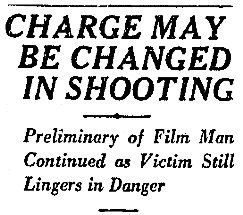 March 2, 1927
March 2, 1927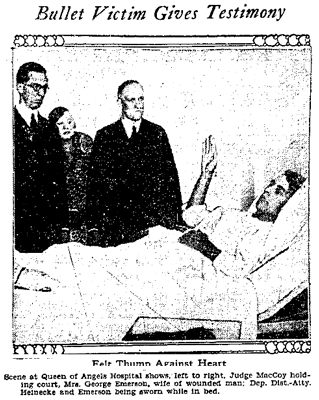



 Seems that J. Belton’s father, John D. Kennedy, of
Seems that J. Belton’s father, John D. Kennedy, of 
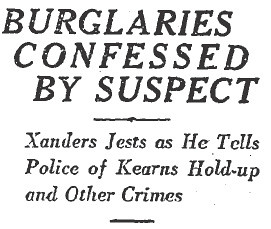
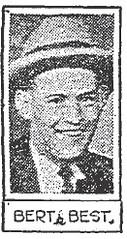
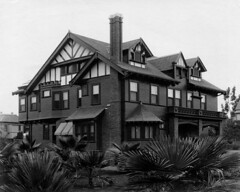 Xanders spent most of the day with sheriffs, trading quips and calmly confessing to a litany of misdeeds. He admitted to burglarizing the home of John Lindley near Azusa (see photo), and he has also said that he and his crime buddy, Ray E. McCoy, robbed famed boxing manager
Xanders spent most of the day with sheriffs, trading quips and calmly confessing to a litany of misdeeds. He admitted to burglarizing the home of John Lindley near Azusa (see photo), and he has also said that he and his crime buddy, Ray E. McCoy, robbed famed boxing manager 
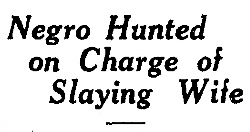 Despite there being a chance for a difference—Adams steadily asserted that the woman
Despite there being a chance for a difference—Adams steadily asserted that the woman 

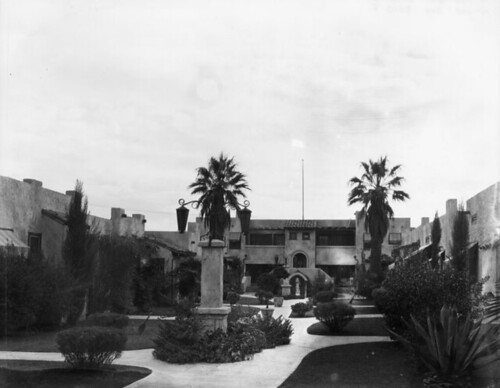

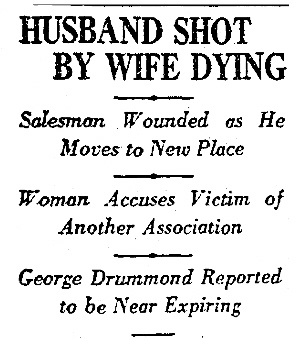
 George and Mabel Drummond had nothing if not a tempestuous wedded life. Married ten years, hitched when George was fifteen and Mabel twenty-one, their stormy union included many a sterling instance, including the time a jealous Mabel held George in a chair at gunpoint for three hours while she threatened to shoot him with every passing moment.
George and Mabel Drummond had nothing if not a tempestuous wedded life. Married ten years, hitched when George was fifteen and Mabel twenty-one, their stormy union included many a sterling instance, including the time a jealous Mabel held George in a chair at gunpoint for three hours while she threatened to shoot him with every passing moment.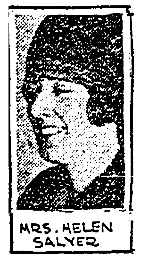 Mabel was arrested by Detective Lieutenants Brown and Adams of University Station, who found her composed, and that she could only comment that if she couldn’t live with him, no-one could. When asked if she felt any regret, she replied:
Mabel was arrested by Detective Lieutenants Brown and Adams of University Station, who found her composed, and that she could only comment that if she couldn’t live with him, no-one could. When asked if she felt any regret, she replied:
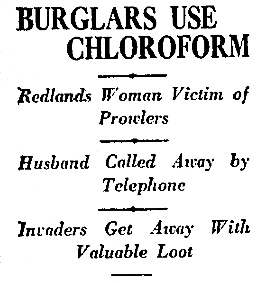 Well-known automobile distributor Lawrence S. Ferguson,
Well-known automobile distributor Lawrence S. Ferguson, 
